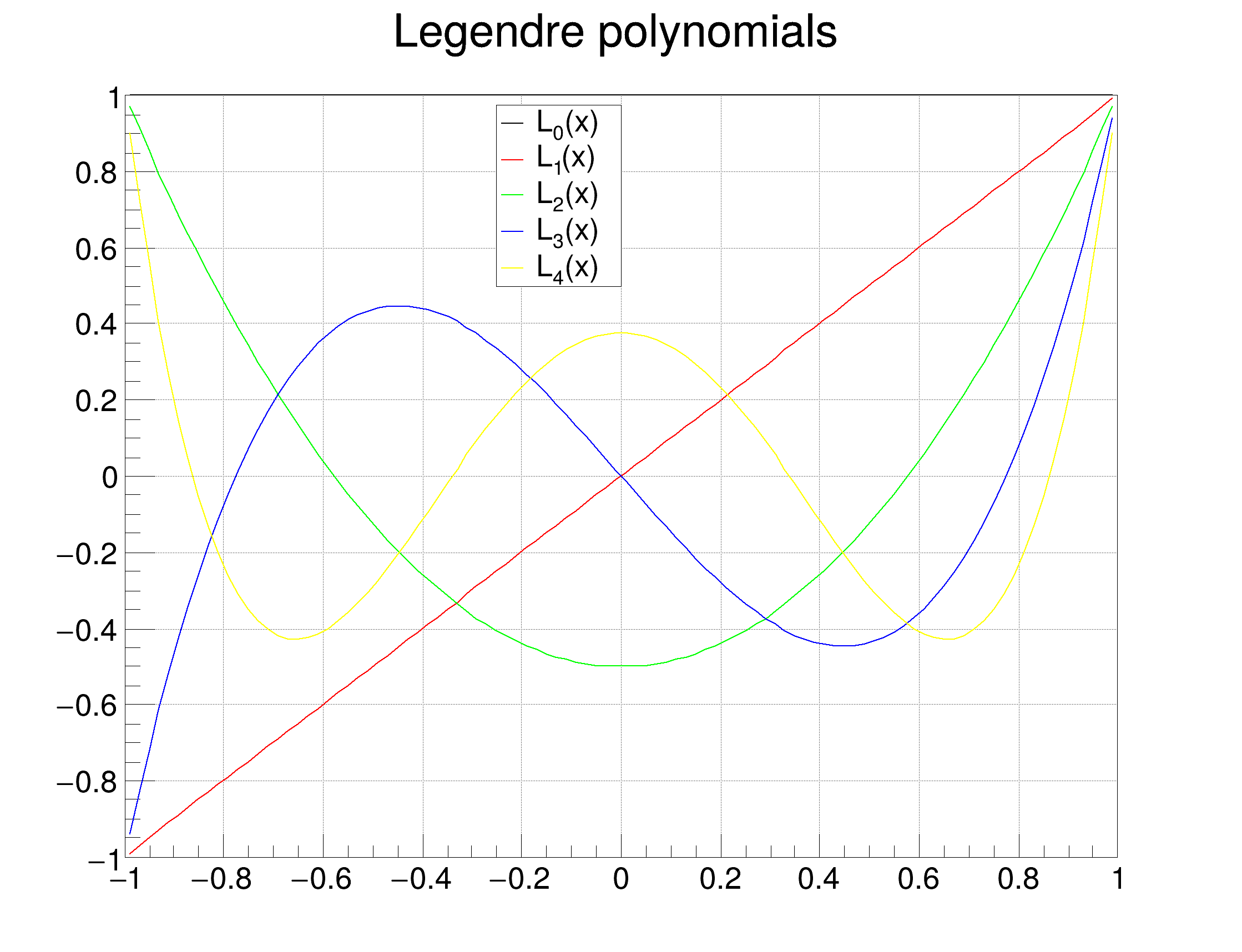

Example of first few Legendre Polynomials
Draws a graph.

#include <cmath>
{
TCanvas *Canvas =
new TCanvas(
"DistCanvas",
"Legendre polynomials example", 10, 10, 750, 600);
for(
int nu = 0;
nu <= 4;
nu++)
{
L[
nu]=
new TF1(
"L_0",
"ROOT::Math::legendre([0],x)", -1, 1);
L[
nu]->SetParameters(
nu, 0.0);
L[
nu]->SetLineColor(
nu+1);
}
L[0]->SetMaximum(1);
L[0]->SetMinimum(-1);
L[0]->SetTitle("Legendre polynomials");
leg->AddEntry(L[0]->DrawCopy(),
" L_{0}(x)",
"l");
leg->AddEntry(L[1]->DrawCopy(
"same"),
" L_{1}(x)",
"l");
leg->AddEntry(L[2]->DrawCopy(
"same"),
" L_{2}(x)",
"l");
leg->AddEntry(L[3]->DrawCopy(
"same"),
" L_{3}(x)",
"l");
leg->AddEntry(L[4]->DrawCopy(
"same"),
" L_{4}(x)",
"l");
}
ROOT::Detail::TRangeCast< T, true > TRangeDynCast
TRangeDynCast is an adapter class that allows the typed iteration through a TCollection.
TVirtualPad * cd(Int_t subpadnumber=0) override
Set current canvas & pad.
This class displays a legend box (TPaveText) containing several legend entries.
virtual void Draw(Option_t *option="")
Default Draw method for all objects.
void SetGrid(Int_t valuex=1, Int_t valuey=1) override
- Author
- Lorenzo Moneta
Definition in file Legendre.C.


